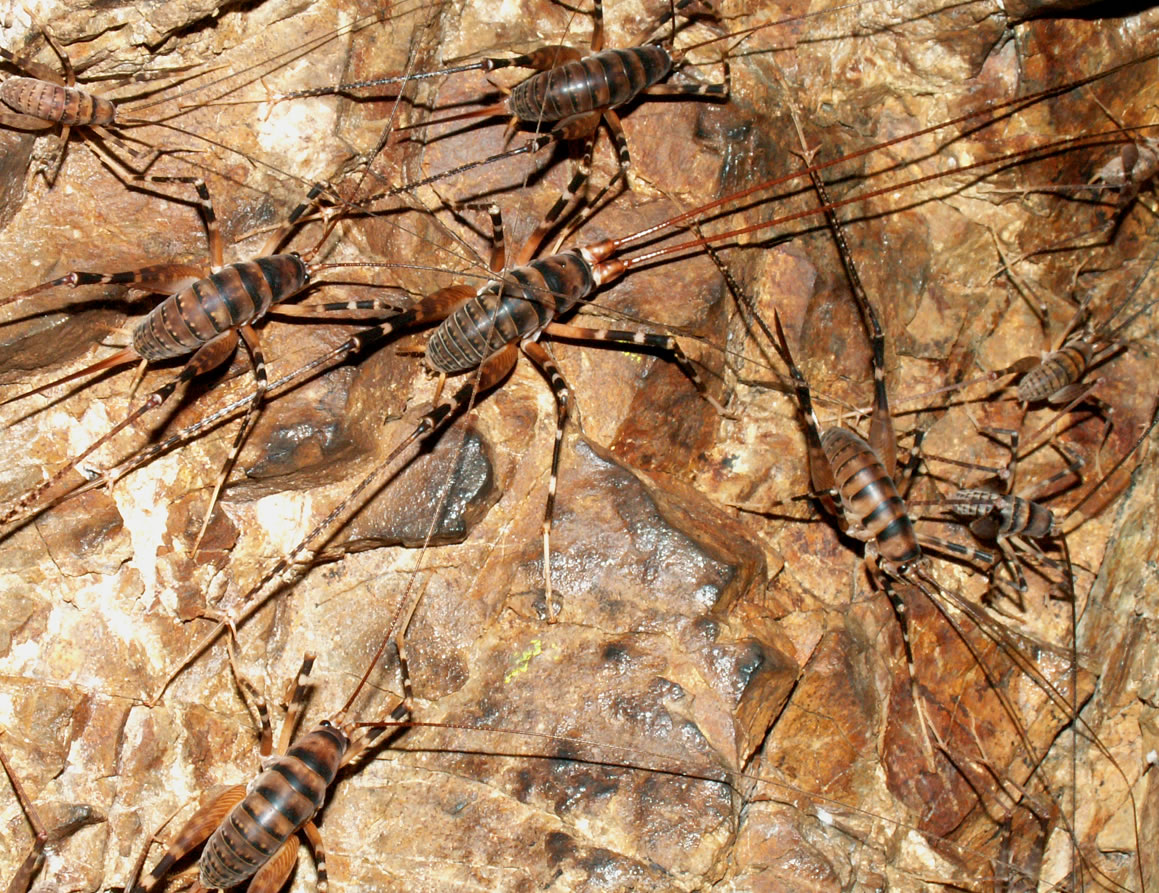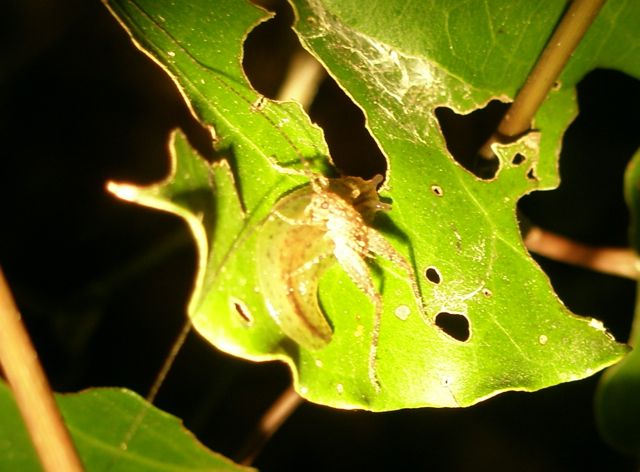|
Cave weta - Ecology and biodiversity New Zealand species of Rhaphidophoridae are classified in the subfamily Macropathinae along with their relatives in other parts of the Southern Hemisphere. The cave weta (~60 New Zealand species) have extra-long antennae, and may have long, slender legs and a passive demeanour. Although they lack hearing organs (tympana) such as those seen on the front legs of Hemideina and Deinacrida species, cave weta are sensitive to ground vibrations detected through pads on their feet. Specialised hairs on the cerci and organs on the antennae are also sensitive to low frequencyvibrations in the air. Rhaphidophoridae are nocturnal although those cave weta that live up to their name and occupy caves or similar dark places, show some activity during daylight hours. The majority of New Zealand species conceal themselves during daylight hours in and among leaf litter, logs, tree holes and amongst broken rocks. Diet Cave weta have been observed to "lick" native slugs, but this has never been formally reported. They do notappear to eat the slugs but may gain moisture and some nutrients from the slime.
|
||
 |



